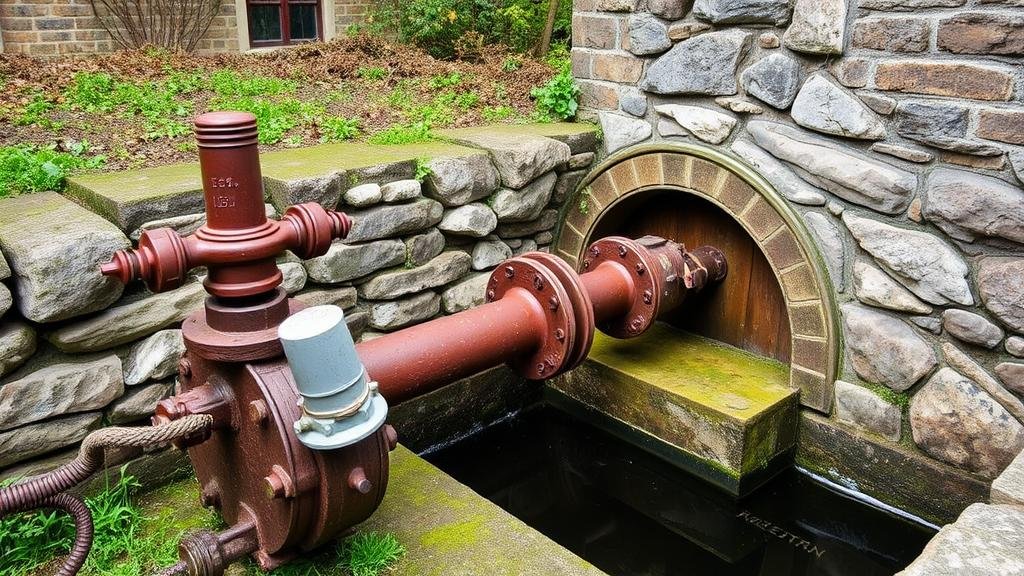Tracing Disused Water Pumping Stations for Early Engineering Tools
Tracing Disused Water Pumping Stations for Early Engineering Tools
The study of disused water pumping stations offers valuable insights into historical engineering practices and the evolution of water management technologies. These stations, once crucial for urban infrastructure, reflect the advancements in engineering design and the socio-economic conditions of their times. This article explores the significance of these structures, their historical context, and implications for modern engineering practices.
Historical Context of Water Pumping Stations
Water pumping stations became integral to urban environments during the Industrial Revolution, particularly from the late 18th century to the early 20th century. Between 1800 and 1900, urban populations in Europe and North America exploded, necessitating efficient water supply systems. For example, the New River Head in London, built in 1600, served as a significant early example of a pumping station. By the mid-19th century, innovations in steam power enabled these facilities to function more effectively and deliver water to increasingly distant locations.
Engineering Innovations
The design and technology of water pumping stations evolved considerably during the 19th century. Key engineering innovations included:
- Steam Engine Utilization: The deployment of steam engines in pumping stations, such as those used at the Vauxhall pumping station in London (built in 1856), allowed for more reliable and powerful water transportation.
- Cast Iron Pipes: The advent of cast iron pipes improved the durability and capacity of water supply systems. The introduction of these pipes in the 18th century greatly expanded distribution networks.
Such innovations reflect the burgeoning field of civil engineering and the urgent need for sustainable water management as urban areas expanded. The combination of these technologies allowed urban authorities to overcome previous limitations, such as water scarcity and contamination.
Case Studies of Disused Pumping Stations
Several notable disused water pumping stations present extensive opportunities for archaeological and engineering analyses. For example:
- St. Georges Pumping Station, Brighton: Built in 1883, this station represented a major engineering feat of its time, featuring steam-driven pumps that provided water to local residents until its closure in the 1990s.
- Battersea Pumping Station, London: This iconic structure, which stopped working in the 1980s, illustrates the shift toward electric-powered pumping systems in the 20th century and has since been reimagined for redevelopment.
These examples exemplify the shift in engineering paradigms from steam to electric power, demonstrating how technology adapts to meet societal needs.
Methodologies for Tracing Disused Stations
Tracing disused water pumping stations involves several research methodologies, including:
- Historical Documentation: Archival research is essential in identifying past engineering designs and service records. Historical maps and municipal documents can provide insights into the operational contexts of these pumping stations.
- Field Surveys: Conducting field surveys aids in the physical examination of existing structures. Detailed inspections can reveal construction techniques and materials that were once cutting-edge.
These methodologies help preserve historical knowledge and inform contemporary engineering practices by understanding past challenges and solutions.
Implications for Modern Engineering
Understanding the designs and operations of historical water pumping stations has several implications for contemporary engineering:
- Sustainable Practices: Lessons learned from past water management strategies can guide current practices in sustainability by demonstrating the importance of efficiency and resource management.
- Urban Planning: Insights gained from historical infrastructure can inform modern urban planning, offering guidance on integrating historical preservation with new developments.
For example, cities like New Orleans have integrated historical water management techniques to deal with contemporary flooding issues, highlighting the continuing relevance of these early engineering tools.
Conclusion
The tracing of disused water pumping stations represents a significant avenue for understanding early engineering tools and practices. As technologies evolve, reflecting on the historical context of these infrastructures allows current engineers to innovate responsibly. Plus, as cities face modern challenges related to water management and urban planning, leveraging historical knowledge becomes essential for sustainable growth. Continued research and preservation efforts can yield invaluable lessons for contemporary and future engineering endeavors.


